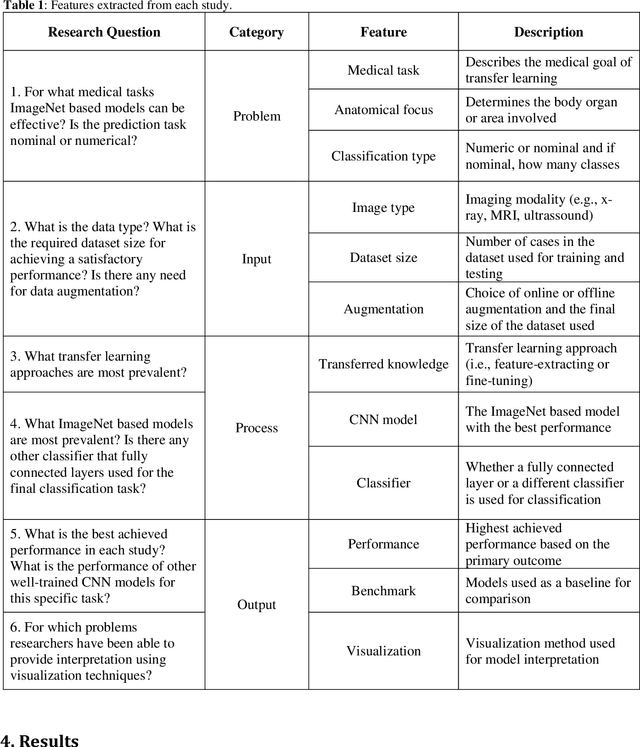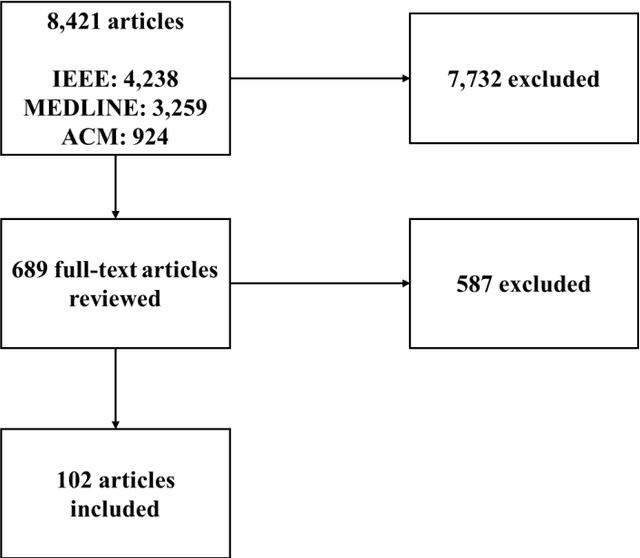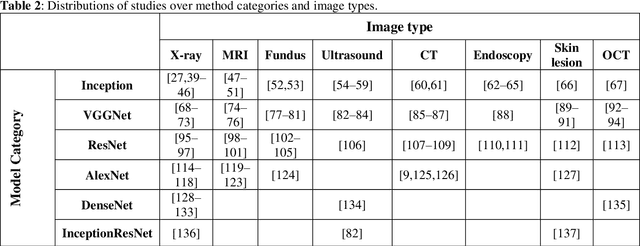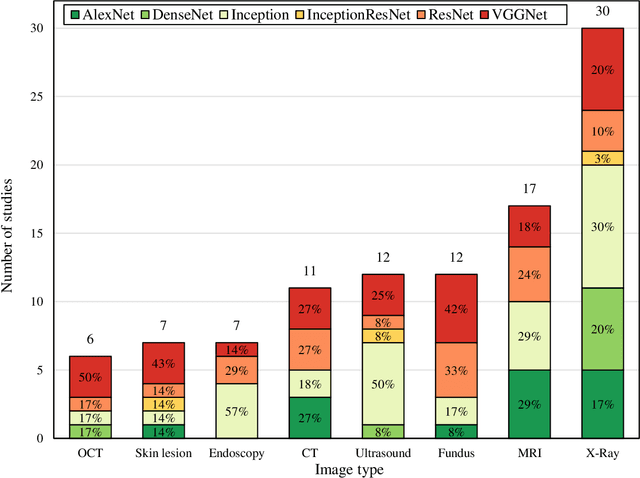A scoping review of transfer learning research on medical image analysis using ImageNet
Paper and Code
Apr 27, 2020



Objective: Employing transfer learning (TL) with convolutional neural networks (CNNs), well-trained on non-medical ImageNet dataset, has shown promising results for medical image analysis in recent years. We aimed to conduct a scoping review to identify these studies and summarize their characteristics in terms of the problem description, input, methodology, and outcome. Materials and Methods: To identify relevant studies, MEDLINE, IEEE, and ACM digital library were searched. Two investigators independently reviewed articles to determine eligibility and to extract data according to a study protocol defined a priori. Results: After screening of 8,421 articles, 102 met the inclusion criteria. Of 22 anatomical areas, eye (18%), breast (14%), and brain (12%) were the most commonly studied. Data augmentation was performed in 72% of fine-tuning TL studies versus 15% of the feature-extracting TL studies. Inception models were the most commonly used in breast related studies (50%), while VGGNet was the common in eye (44%), skin (50%) and tooth (57%) studies. AlexNet for brain (42%) and DenseNet for lung studies (38%) were the most frequently used models. Inception models were the most frequently used for studies that analyzed ultrasound (55%), endoscopy (57%), and skeletal system X-rays (57%). VGGNet was the most common for fundus (42%) and optical coherence tomography images (50%). AlexNet was the most frequent model for brain MRIs (36%) and breast X-Rays (50%). 35% of the studies compared their model with other well-trained CNN models and 33% of them provided visualization for interpretation. Discussion: Various methods have been used in TL approaches from non-medical to medical image analysis. The findings of the scoping review can be used in future TL studies to guide the selection of appropriate research approaches, as well as identify research gaps and opportunities for innovation.
 Add to Chrome
Add to Chrome Add to Firefox
Add to Firefox Add to Edge
Add to Edge